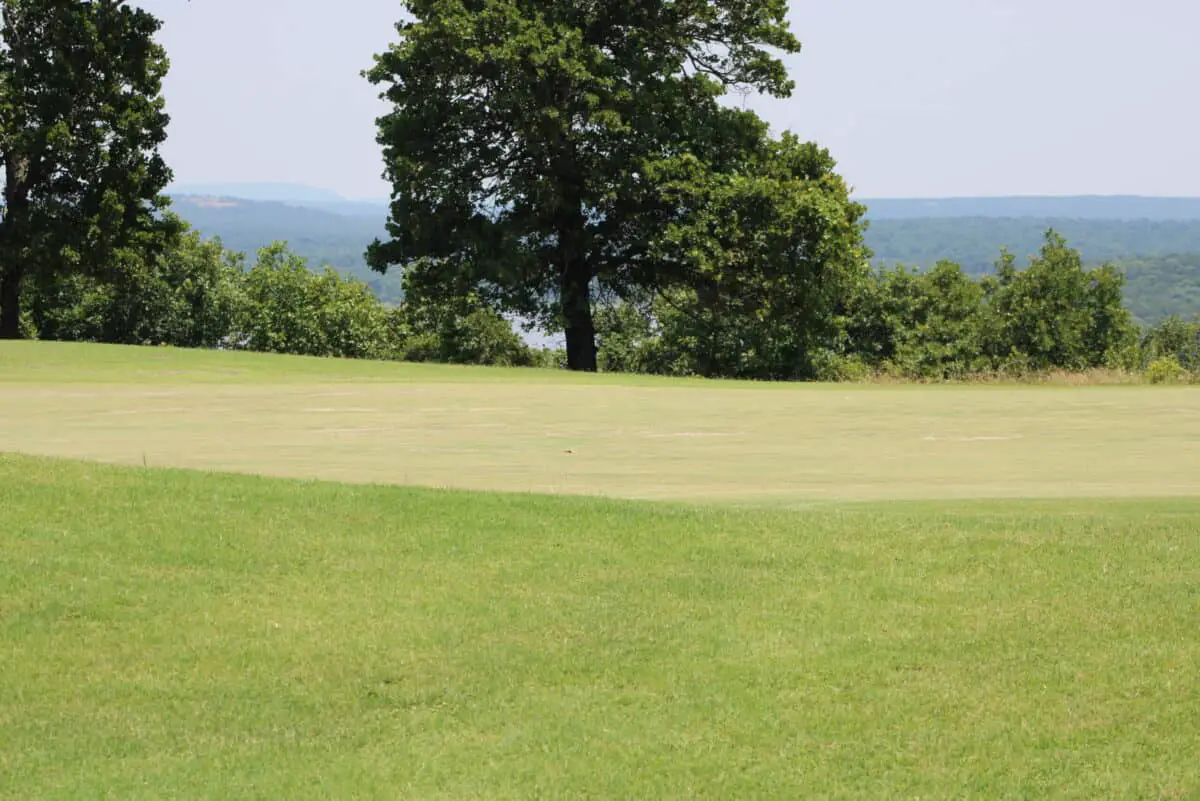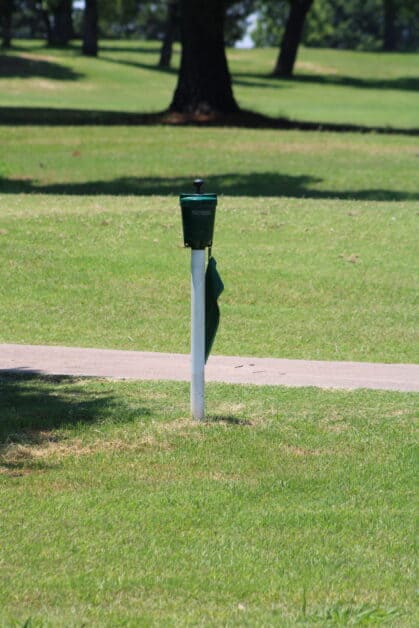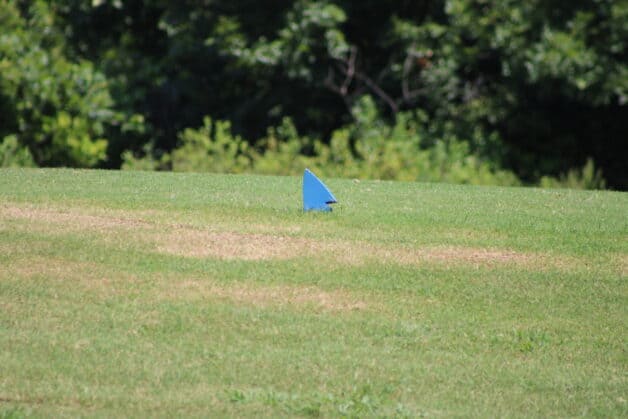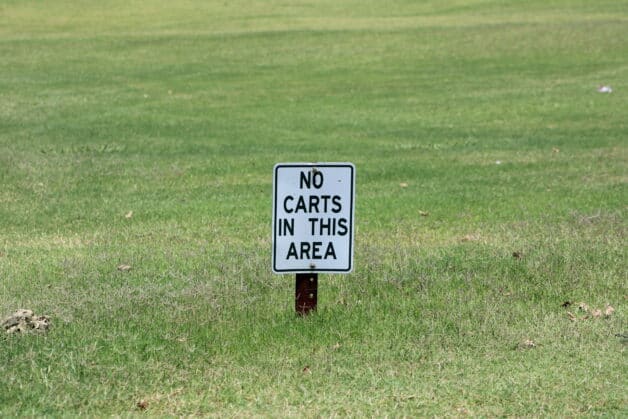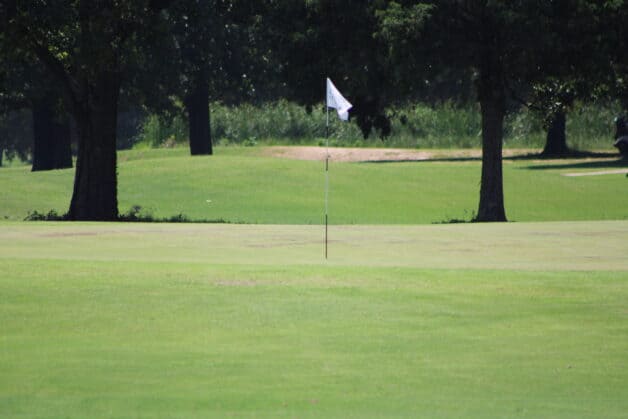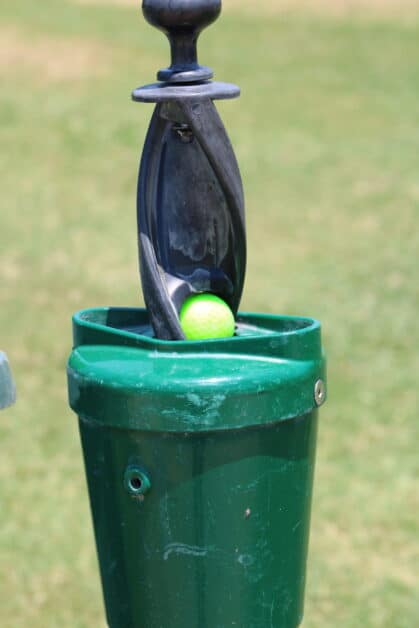Picking the right set of wedges for your game can sometimes be tricky, as many sets come with standard wedge configurations, usually pitching wedge, a sand wedge, and a lob wedge.
The 52 degree wedge is considered a gap wedge, and the 54 degree is in the sand wedge category, so there are some distinct differences in terms of shot application, which one should be in the bag, and what other wedges would accompany it to make up a set.
This discussion will look at the 52 degree wedge as the utility wedge and when and how it would be used vs. the 54 degree wedge, and the benefits of having the gap wedge in the bag.
What Are The Wedges And Their Lofts
Before we get into the 52 VS 54 Wedge debate, it’s essential to understand the various wedges and their lofts so you can see how the various wedges fill in for both distances and shot types.
Pitching wedge
Pitching wedges have a loft of between 45 and 48 degrees
Gap wedge
Gap Wedges have a loft of between 50 and 52 degrees
Sand wedge
Sand Wedges are lofted between 54 and 58 degrees
Lob wedge
Lob wedges have a loft between 58 and 64 degrees
The golf wedge is the most accurate of the golf clubs you will have in your bag, and as such, they are used to get the golf ball on the green from distances of 130 yards or closer, and, as they increase in the loft, the distance decreases, but the height and spin increase.
They are often used for a chip shot, pitch shots, half swing and full swing shots. Golfers of all levels, from beginners to a professional golfer will use the higher lofted wedges for those shorter distances.
The Rise Of The 52 Degree Gap Wedge
Most golf sets have a pitching wedge and sand wedge with twelve other clubs, but the pitching and sand wedge lofts gap were too significant, so the need for a wedge to fill the ‘gap’ was born.
In the 1960s, the loft gap between the pitching wedge and sand wedge was about five degrees, but that gap today is 10 degrees or more, so manufacturers started to produce a wedge that fitted between them.
This club is designed to get the golf ball up and spinning with less rollout off the greens than the pitching wedge, but with not as much loft as the sand wedge. It is also used to play low chip shots around the green with the short game and can be used for bunker play if a long shot needs less flight and more distance.
How Far Does The Average Player Hit Their Wedges
The table below shows the average distance for the wedges so you can match up your distances accordingly and see what the best options would be for your game.
Wedge Average Distance
Pitching Wedge: 46-50 degrees 100 yards
Gap Wedge: 50-52 degrees 90 yards
Sand Wedge: 54-56 degrees 80 yards
Lob Wedge: 58-60 degrees 60 yards
How To Pick Your Wedge Set
Depending on your handicap level , you may only elect to have three wedges if you are an average mid-to-high handicap player. Still, if you shoot lower scores, your focus on accuracy on the ‘scoring’ shots would be more significant, and you may choose to have four wedges.
The primary consideration for choosing your wedges is the distance they will give you. Hence, it would be best to spend some time at the range calibrating your wedges to understand the average distance and shape and then decide your set configuration.
The best way to determine what wedges you need for your golf game is to take a range of wedges to the driving range and hit around 10-12 shots with each one to see consistent distance and shape.
Plus, you know your game better than anyone else, and you know what kind of distances you usually are from the green.
Don’t just go and buy a set of wedges for the sake of it; you need some first-hand intel as to how you swing those clubs and the results you get consistently before you spend money.
Most coaches and pros advise having your wedges spaced not more than 4-6 degrees of loft apart so that you can comfortably cover the distances from around 100 yards or closer.
So if you have a 48-degree pitching wedge, then a 52 wedge and 56 sand wedge would be a good option, but by the same token, you could also have a 48 degree pitching wedge with a 54-degree sand wedge and 60-degree lob wedge, so the 54-degree would replace both the gap and sand wedge in this set.
When Would You Use The 52 Degree Wedge
The 52 degree wedge would be used when you have a distance between your pitching wedge and sand wedge, or you need to hit an approach shot into the wind and have a bit more on it than your sand wedge can offer.
The 52 degree wedge is also helpful for longer, lower trajectory chip shots from off or around the green or a more extended bunker shot using a half or three-quarter swing.
The 54 Degree Wedge
As you can conclude from the points above, deciding which wedge set to choose can be difficult, and maybe here is where the 54 degree wedge comes into its own.
With two degrees less loft than the classic sand wedge and two degrees more loft than the gap wedge, it may slot in nicely, especially if you want to have a lob wedge in your set.
The lob wedge allows you to hit very high shots with plenty of spins that stop dead on the green, and those are great options when you need to get over bunkers or water and still get it close with little rollout.
A well-struck 54 degree wedge could give around 85-90 yards, and because it flies higher than the 52 degree wedge, you would still be able to land it soft with less roll, and since it is classified as a sand wedge too, it could be used efficiently for bunker shots as well.
For short game chips around the green, the 54 degree would give you a slightly higher trajectory than the 52 but only marginally at those distances.
The only consideration here is that many players find the 56-degree sand wedge easier to hit, and while the loft and bounce difference between them is minute, it may just be all in mind after all.
Conclusion
Whether you opt for the 52 degree gap wedge or the 54 degree will depend mainly on how each feels which you swing them and the consistency of the results achieved and how those results fit into your existing game or your aspiring game.
So it boils down to personal preference, finding the right wedge or right two wedges that provide the right combination of distance control, good spin or maybe just more spin and can be struck in such a way that you feel your contact and comfort with the wedge matches that of professional golfers.
Either way, choosing your wedges is a great excuse to go and spend a few hours at the range and test driving some of the best wedges your pro shop has to offer. It sounds like a great way to spend an afternoon!
- Should Tee Boxes Be Level? - January 23, 2024
- 3 Hybrid Distance - November 15, 2023
- Innovations in Golf Mobility: An In-depth Review of Top Golf Scooters - October 12, 2023
